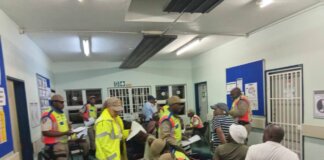By Azure Fey “We are not using technology: technology is using us.”
South Africans have once again battened down the hatches following this weekend’s announcement that the country would be placed under adjusted level 4 lockdown. With somewhat glacial progress in the vaccine rollout, citizens are having to do what they can to protect themselves from the virus.
This means more virtual meetings and what many local and international experts, and commentators are calling ‘zoom fatigue’. It’s been one of the biggest gripes amongt employees in organisations across the world. In countries where the majority of citizens have been vaccinated against the virus, this move back to office is well on its way.
Zoom fatigue is only one of the problems working from home. Efficiency, productivity and social cues are all taking a hit.
Purple Group founder and former South African Post Office CE Mark Barnes is firm on the issue: there are several disadvantages to working from home, notably that as social beings, people can’t interact meaningfully anymore. This, he says, impacts negatively on both efficiency and productivity.
Barnes recently spoke to Linda Trim of Giant Leap, South African workplace specialist, during a podcast series titled ‘Where is the Office’. Giant Leap has undertaken extensive research over the last year to determine the future of the office since lockdown.
Longer working hours
According to Barnes, while people no longer spend time travelling to and from the office or deal with the inconvenience of sitting in traffic, there is a definite shift in ways of working. “You’re constantly in demand and working longer hours than ever before. This is an invasive alternative to social interaction. We are in back-to-back meetings, there’s no time for lunch, no drinks after work or gathering for a coffee,” says Barnes.
Lack of social cues and body language
Barnes finds it difficult to connect in the new virtual office space. “You can’t see social cues like hand gestures, or read body language. These are all important critical parts of communication within organisations.
“Talking to a flat screen is nowhere near as interactive as seeing people in a room and getting a feel for the room one-on-one,” says Barnes.
The inefficiency of perceived efficiency
Working from home is perceived by some to improve efficiency, but Barnes believes that it doesn’t produce the same cohesive output as a team would normally do when working from the office. “The sum of screens is not the sum of individuals,” says Barnes, by way of debunking the perception that employees showing up virtually are as engaged as meeting and collaborating in person.
In addition, Barnes is critical of the generalised view that technology is improving ways of working and positively enabling the new work from home. “We think that technology is making our lives easier but there is a two-way invasiveness about technology. We are not using technology: technology is using us.”
Office culture and socialising
Barnes maintains that they hybrid model of working from home and the office isn’t enough either.
“The current quiet of the office is disarming and unsettling. People are in defined spaces, and we are aware of our space and the distance between us. Those things are not pleasant. We are naturally social beings. We like being with each other, shaking hands, kissing, saying howzit. We are missing that.”
“The office gives us the opportunity of engendering spirit and changing things that are not on the surface but rather something that lies deeper – the culture and oneness, the feeling of being part of a team,” says Barnes.








